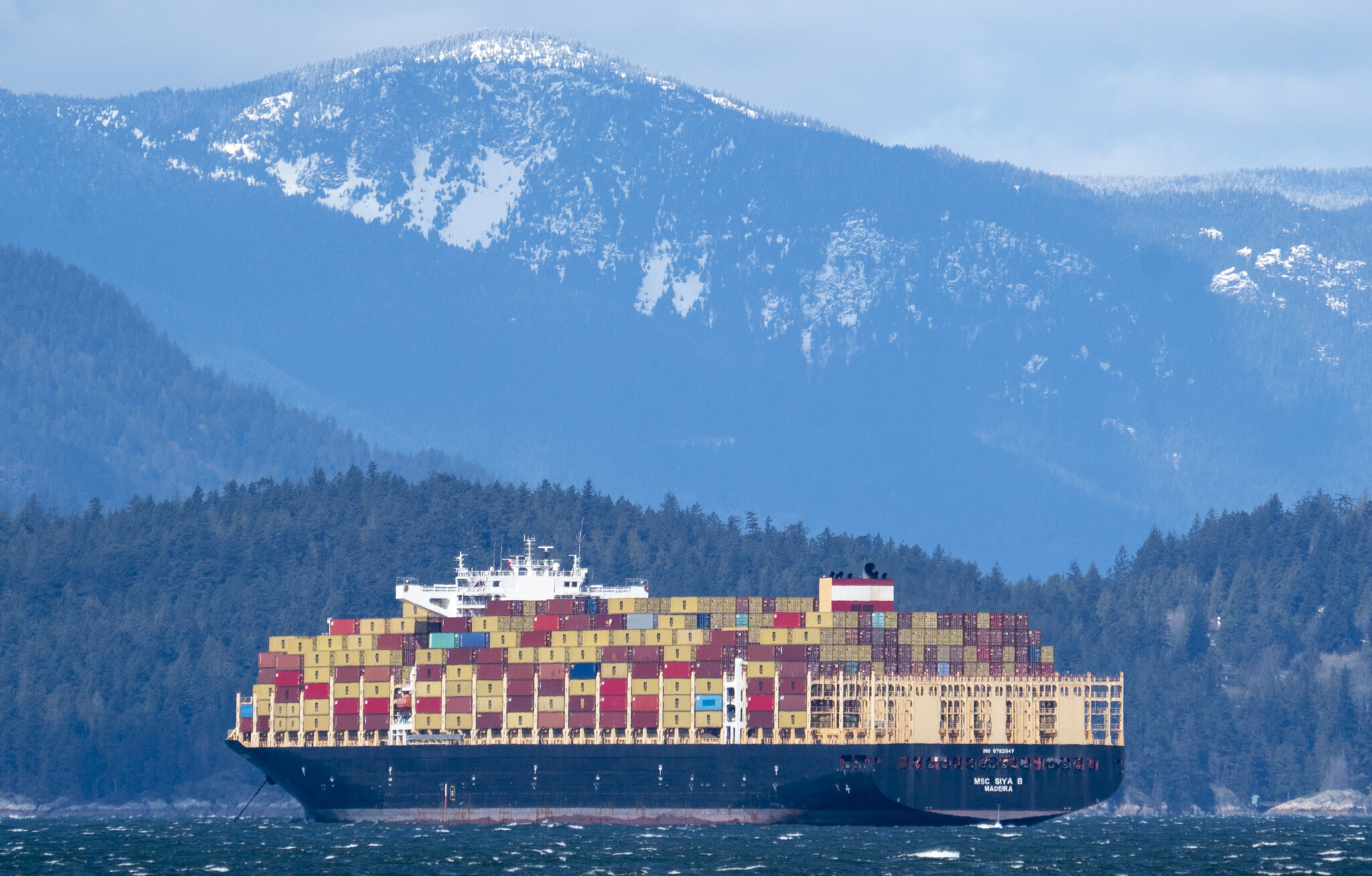In a departure from past practice, Prime Minister Carney has decided not to issue individual mandate letters to his ministers, leaving each to determine on their own how best to contribute to the government’s agenda and fulfill their responsibilities. In Letter to a minister, The Hub’s new series in collaboration with the Macdonald-Laurier Institute, we will provide each minister with a policy agenda that is bold enough to address the grave challenges that the country faces, but manageable enough to be implemented in a realistic time frame.
The series continues this week with a letter to the minister of transport.
The Honourable Stephen Mackinnon, P.C., M.P.
Minister of Transport and Leader of the Government in the House of Commons
House of Commons,
Ottawa, Ontario
Dear minister,
Congratulations on your appointment as the minister of transport. You are leading a department with a proven track record of keeping Canada’s transportation system safe, secure, and operational across vast geographies and challenging conditions. However, over the past decade, the department’s role as a driver of economic growth has not been as prominent as it must now become. In an era of shifting trade dynamics, supply chain vulnerabilities, and urgent infrastructure demands, Transport Canada must evolve to ensure its role as steward of the transportation system actively supports—rather than inadvertently hinders—national competitiveness.
Transport Canada can play a vital role in advancing the prime minister’s economic agenda by ensuring the seamless movement of people and goods across the country, helping to boost productivity across the Canadian economy, as well as reducing costs for Canadian travellers. Your department is structured by mode of transportation, and so I am offering targeted recommendations within each mode to support your efforts in ensuring that Transport Canada takes its full space in sustaining and growing Canada’s economy.
Aviation
Canada’s airline system is safe, but more can be done to improve affordability, convenience, and consumer value. Bureaucratic inertia and restrictive policies have allowed anti-competitive behaviours to persist, especially when compared to more liberalized international markets. The Competition Bureau’s recent report, Cleared for Takeoff: Elevating Airline Competition, underscores this imbalance and offers a roadmap for reform focused on addressing structural challenges that limit foreign investment and ownership, and stifle innovation and market entry. A renewed focus on investment, including loosening foreign ownership restrictions and reinvesting in aviation infrastructure, is essential to modernize Canada’s aviation sector and deliver better outcomes for consumers.
You should direct your department to explore the implementation of the Competition Bureau’s proposals, particularly those related to merger oversight and market access. The Bureau should be empowered to review and approve airline mergers and collaborations to ensure they enhance—not hinder—competition.
Canada’s largest airports are managed by private, not-for-profit authorities operating under long-term leases on federally owned land. These entities are designed to be self-financing, non-share-capital corporations with boards drawn from local communities. However, over time, it has become evident that this governance model does not effectively contain costs for Canadian consumers, who face some of the world’s highest airfares, partly because of high landing fees at airports.

A FedEx plane taxies down the runway at the Ottawa International Airport in Ottawa on Thursday, Oct. 3, 2024. Sean Kilpatrick/The Canadian Press.
In Budget 2025, the government has signalled its desire to attract private investment by re-evaluating airport governance and the ground lease rents that are paid to the government, and I agree that this is the right moment to reconsider the federal government’s role in financing Canada’s largest airports. With billions of dollars in federal infrastructure support over the past several years, and almost $600 million annually flowing back to Ottawa in rent from airport authorities, the current arrangement is both contradictory and inefficient.
If these airports are expected to be self-financing, then it’s time for the government to exit the funding equation and allow them to operate with true financial autonomy. With planned multi-billion-dollar infrastructure upgrades at both Montreal’s Pierre Elliott Trudeau and Toronto’s Pearson airports, now is the time to act. Here are some concrete actions you can take:
- It’s time to revisit the governance structure of Canada’s largest airports. You should establish a task force to look at the costs and benefits of privatizing Canada’s largest airports, like they have done in the U.K. and, to a lesser extent, in Australia and New Zealand. This governance structure must include a strong regulator to protect Canadians against the risk of monopolistic behaviour.
- Canada’s largest airports pay substantial rent to the federal government—close to almost $600 million annually, representing about 12 percent of their total revenues. These costs are passed directly onto consumers through elevated fees and ticket prices. To restore affordability and align with the principle of self-financing, the federal government should eliminate rent charges on airport land. In return, airport authorities must commit to reducing passenger fees and reinvesting the savings into infrastructure improvements.
Rail
Canada’s era of nation-building rail projects remains a powerful symbol of ambition and unity—but it would be folly to assume that the economic, geographic, and political conditions that enabled those achievements can be replicated today. The proposed high-speed rail project in Ontario and Quebec—Alto, officially known as the Toronto–Quebec City High-Speed Rail Network—has been estimated with a potential price tag of $80 to $120 billion. Canadians are likely to be sceptical that such costs can be contained, given the federal track record on large-scale infrastructure delivery.
Beyond the financial risks, the sheer complexity of the undertaking—involving multiple levels of government, private partners, Indigenous communities, and regional stakeholders—makes this a formidable proposition. Competing jurisdictional priorities, including highway expansion and regional transit needs, further complicate the path forward. While the federal budget frames high-speed rail as a “nation-building” initiative, it has yet to be matched by provincial commitment, detailed planning, or a coherent delivery strategy.
- It is therefore time to stop throwing good money after bad and to stop work on the current high-speed rail project. The expanded scope, coupled with massive startup and planning costs, has already become a financial drain on the federal government—and will continue to do so without a clear path to affordability, accountability, or regional consensus. Rather, this money should be invested in smaller, regional airports that would remain under Transport Canada ownership, which would promote growth in industries such as tourism for all of Canada’s regions.
View reader comments (0)
Marine
Canada’s ports and marine shipping networks are vital engines of economic growth, connecting our resource-rich regions to global markets and ensuring the efficient movement of goods across the country. As supply chains evolve and global competition intensifies, maintaining resilient, modern port infrastructure—and ensuring that the required complementary infrastructure, such as pipelines, is built—is essential to keeping goods flowing and our economy growing.
- While the Canada Energy Regulator holds primary authority over major energy projects—such as LNG terminals and pipeline construction—Transport Canada plays a critical role in ensuring compliance with transportation-related environmental and safety standards, including for marine and pipeline infrastructure. However, the complexity of regulatory assessments, the mandated consideration of cumulative impacts, and the additional layers introduced by the Impact Assessment Act have significantly delayed project approvals. These delays undermine Canada’s ability to get its resources to market. You must work closely with colleagues at Environment and Climate Change Canada and Natural Resources Canada to prioritize the timely advancement of these projects.
- It is promising to see that your government has identified Ksi Lisims LNG in the most recent list of priorities for the Major Projects Office. However, more is required to ensure sufficient infrastructure to access Asian markets. Roberts Bank Terminal 2 and Deltaport at the Port of Vancouver, and the expansion of the Port of Prince Rupert, must be added as fast-track priorities.
- The moratorium on oil shipping in Northern British Columbia has a negative impact on getting Canada’s oil to important Asian markets. It has created regional disparities as no such legislation exists on the East Coast of Canada; it has faced criticism from First Nations on the negative economic impact on their communities, and it is perceived as politically motivated to appease special interest groups. The Oil Tanker Moratorium Act should be immediately repealed.

A container ship arrives in Vancouver, B.C., Saturday, April 10, 2021. Jonathan Hayward/The Canadian Press.
Trade corridors
Canada must accelerate infrastructure investments that strengthen domestic supply chains and expand international trade corridors—especially those that diversify beyond traditional U.S. dependencies. To this end, Budget 2025 has committed to a $5 billion Trade Diversification Corridors Fund. While this is promising, the past predicts that the government will be challenged to get this money out the door and to ensure that it is appropriately focused on national economic priorities.
Only 20 percent of the $3.8 billion approved for 181 transportation projects between 2017 and 2023 was spent, with complex approvals and limited performance tracking impeding delivery. At the same time, the 2023 National Supply Chain Strategy failed to address industry concerns around overlapping regulations, inflexible frameworks, and vulnerability to disruptions. Canada’s vast geography demands a transportation system that not only moves people and goods efficiently but also relieves bottlenecks, embraces innovation, and delivers lasting value. Federal investments must be strategically selected—focused on projects of national importance, within federal purview, and clearly tied to long-term economic objectives.
Concrete measures you should consider are:
- Develop and publish a national assessment identifying where infrastructure investments are most needed—particularly in regions approaching capacity, where projected growth will demand significant expansion and where investments would be of national scope or significance.
- Further, more work is required with our neighbours to the south to make border crossings better. Many land crossings, like the Detroit–Windsor tunnel, were built in the early 20th century and lack space for modern screening technologies.
Reducing costs and increasing efficiency
Your portfolio has grown a lot since 2015, both in terms of personnel and expenditures. Overall spending by the Transport Canada portfolio has increased 66.6 percent to $5.1 billion, and there is a lot of scope for savings even beyond the $151.6 million over four years planned in Budget 2025. There are some obvious places to find savings.
- Refocus federal investments. Although the budget came out with more money for regional infrastructure, the reality is that the government should withdraw from funding transportation infrastructure projects that are better suited for private sector financing or provincial and territorial oversight. For instance, municipal transit should remain a regional responsibility, while federally mandated infrastructure—such as pipelines—should be expedited to reflect national priorities.
- Rationalize transfer payments. Grants and contributions have surged by 180 percent to $1.7 billion since 2015—an excessive level for a regulatory department. Your department’s core mandate should guide a rigorous review of which payments to reduce or eliminate. Activities like coastal and waterway protection, for example, may be more appropriately managed by federal environmental regulators such as Fisheries and Oceans Canada or Environment and Climate Change Canada.
Concluding thoughts
Canada’s transportation networks are the backbone of our economy, the arteries of our trade, and the infrastructure that connects communities coast to coast. Investing wisely in these systems isn’t just about getting from point A to B, it’s about ensuring Canada stays competitive, resilient, and ready for the road ahead.
Should Canada privatize its largest airports to improve affordability and efficiency?
Is Canada's proposed high-speed rail project a wise investment given its cost and complexity?
How can Canada better leverage its ports and marine shipping for economic growth?











Comments (0)